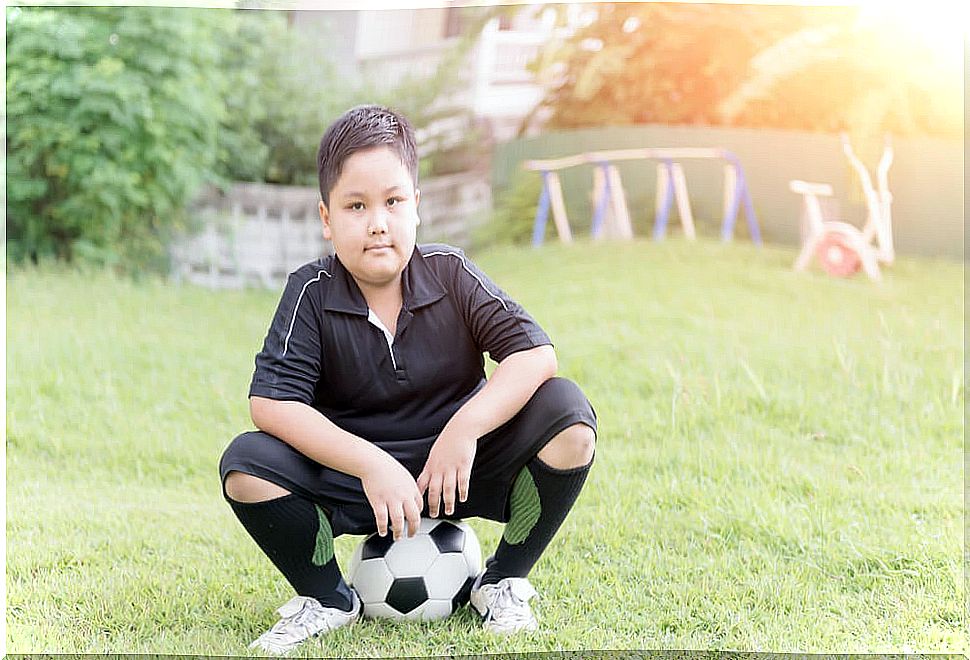Obesity In Childhood, A Big Problem
Currently, obesity in childhood is one of the most serious public health problems. It is a phenomenon that is occurring worldwide and its incidence is gradually increasing.
In fact, it is a pathology that is associated with countries like the United States. However, it also affects smaller and lower-income countries. Unfortunately, it is estimated that around 42 million children under the age of 5 suffer from obesity in childhood.
Obesity is a disease that is not limited to the aesthetic sense, but has serious repercussions on the health of those who suffer from it. For example, children who develop it are more likely to suffer from diseases such as diabetes or others of cardiovascular origin throughout their lives.
In the society in which we live, it seems difficult for our children to maintain a healthy lifestyle and a correct diet. However, we must do our best to eliminate this problem. Therefore, in this article we tell you everything you need to know about obesity in childhood.
What is obesity in childhood?

Obesity in childhood is the most common nutrition-related disorder at this stage of life. It consists of the excessive accumulation of fat in the body, which puts the child’s health at risk.
It is a disease in which many factors intervene, it does not only depend on nutrition. In fact, genetics and physical activity are also two great determinants.
However, it is undoubted that the diet we establish is one of the great culprits of this pathology. Currently, we abuse hypercaloric foods, with high percentages of saturated fat.
In summary, obesity in childhood is a combination of a totally unbalanced diet, sedentary lifestyle and genetics, among others. It is important to know that, as we have said, this disease is related to many health problems, such as diabetes.
How do we know if a child is obese?
The diagnosis of obesity in childhood is not established by appearance, but is calculated by a parameter called ‘body mass index’ or BMI. BMI relates weight to height and is calculated by dividing weight (in kilograms) by height (in meters) squared.
There are a series of tables and references that allow comparing the BMI with the standard levels to know, in a specific case, if it is a case of obesity in childhood or not. However, in children it is more accurate to use the percentile curves for comparison.
What are the risk factors for obesity in childhood?
As we have already mentioned, obesity in childhood does not only depend on the child’s diet. In reality, many factors are involved, such as:
- Genetics: numerous studies link the overweight of parents with that of their children, stating that, if one of the parents is obese, the child has almost three times the risk of being obese. However, it is difficult to differentiate if it is due to the lifestyle that is shared or due to genetics.
- Birth weight: Scientists link the fact that a baby is born with more than 4 kg with obesity in childhood or adulthood.
- Interestingly, breastfeeding during the first year of life appears to be associated with a lower risk of obesity in childhood.
- The place of birth, since a child who lives in a rural environment seems to maintain a more active lifestyle, while those who develop in the city are more likely to be sedentary.
This pathology is even related to other factors such as sleep or the economic level of the family. However, we must be clear that the fundamental thing to face this problem is to focus on the child’s lifestyle.

What can we do to prevent it?
Obesity in childhood is a disease that can determine the rest of the child’s life. This is because, in addition to self-esteem and aesthetic problems, it will lead to a significant increase in the risk of cardiovascular and metabolic problems.
Therefore, it is essential that we act and find a way to establish a suitable diet for them. If you do not know how to do it, it is best to consult a doctor or a nutritionist.
In addition, the ideal is that the child remains active. Introducing sport into your daily routine should be one of the first steps. In fact, this will also help the child improve his social skills and enjoyment.









